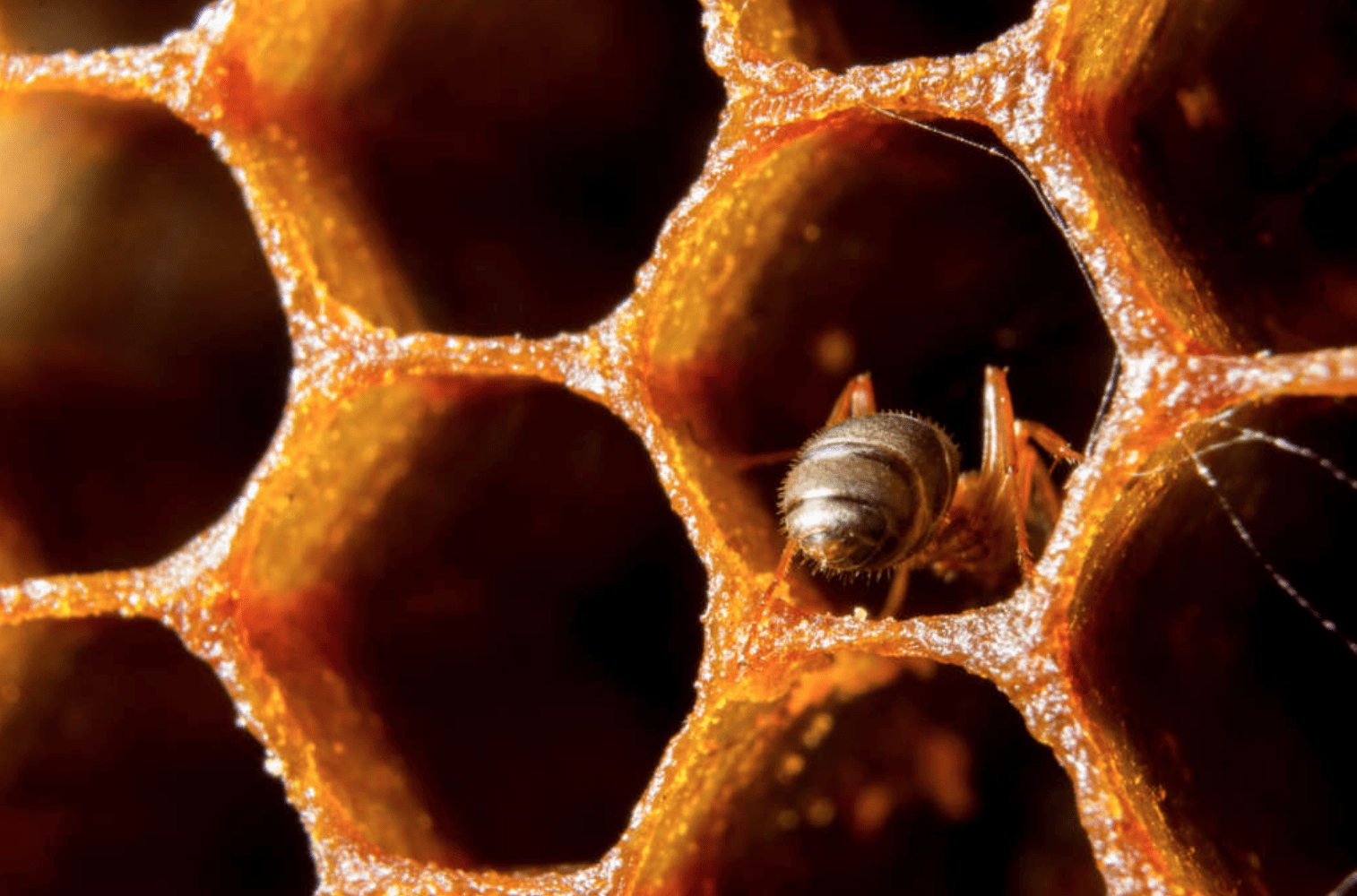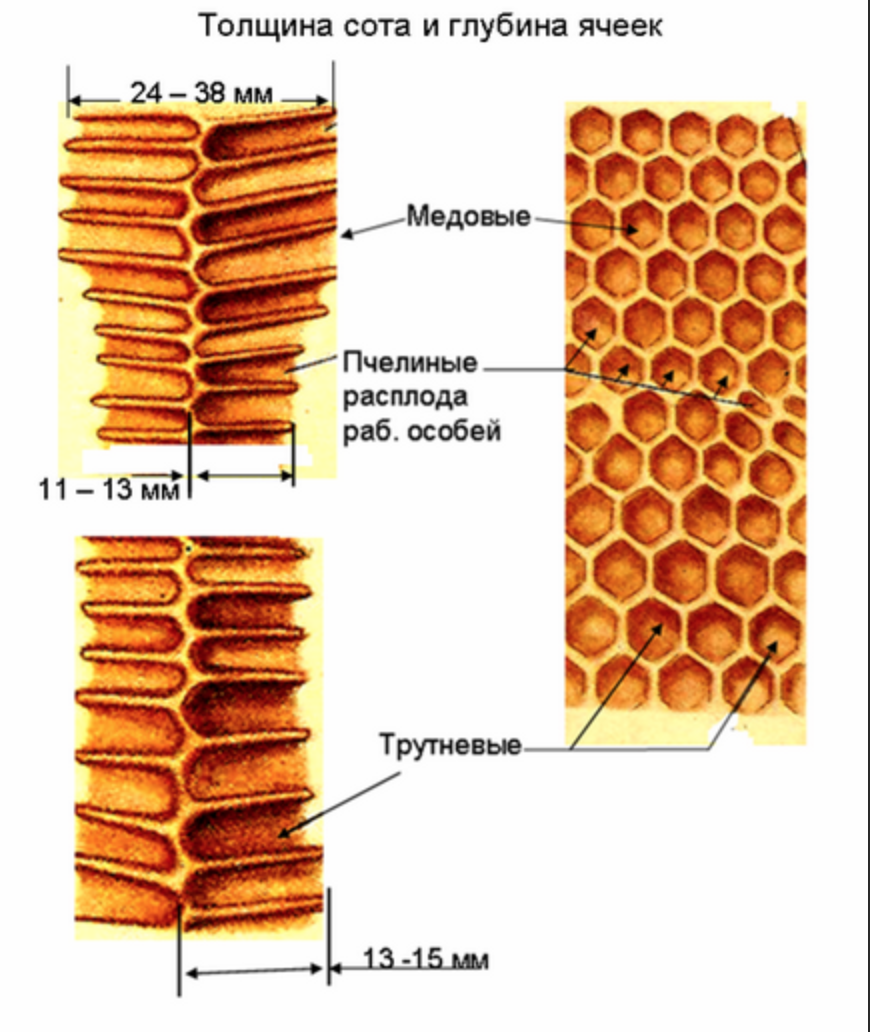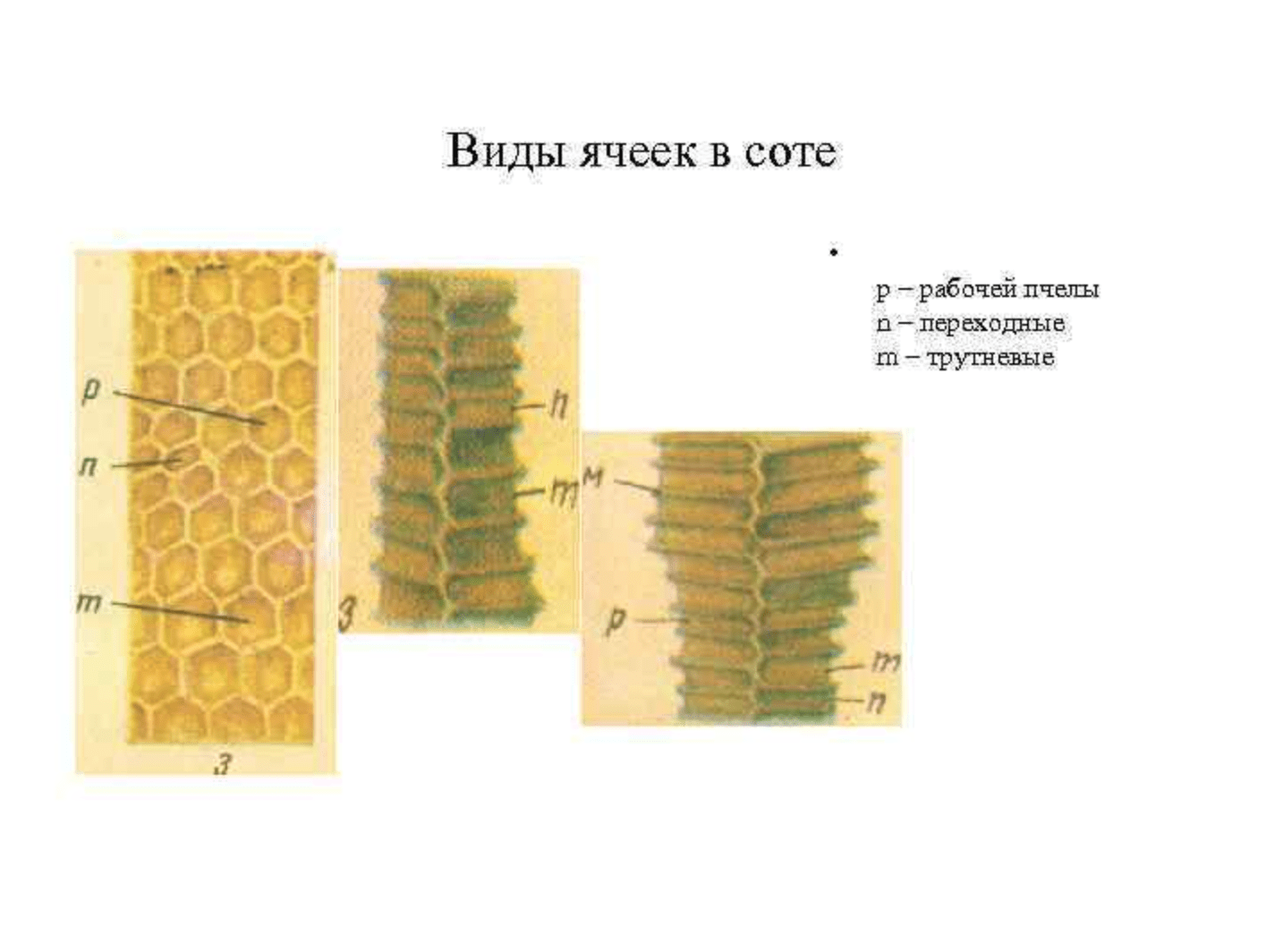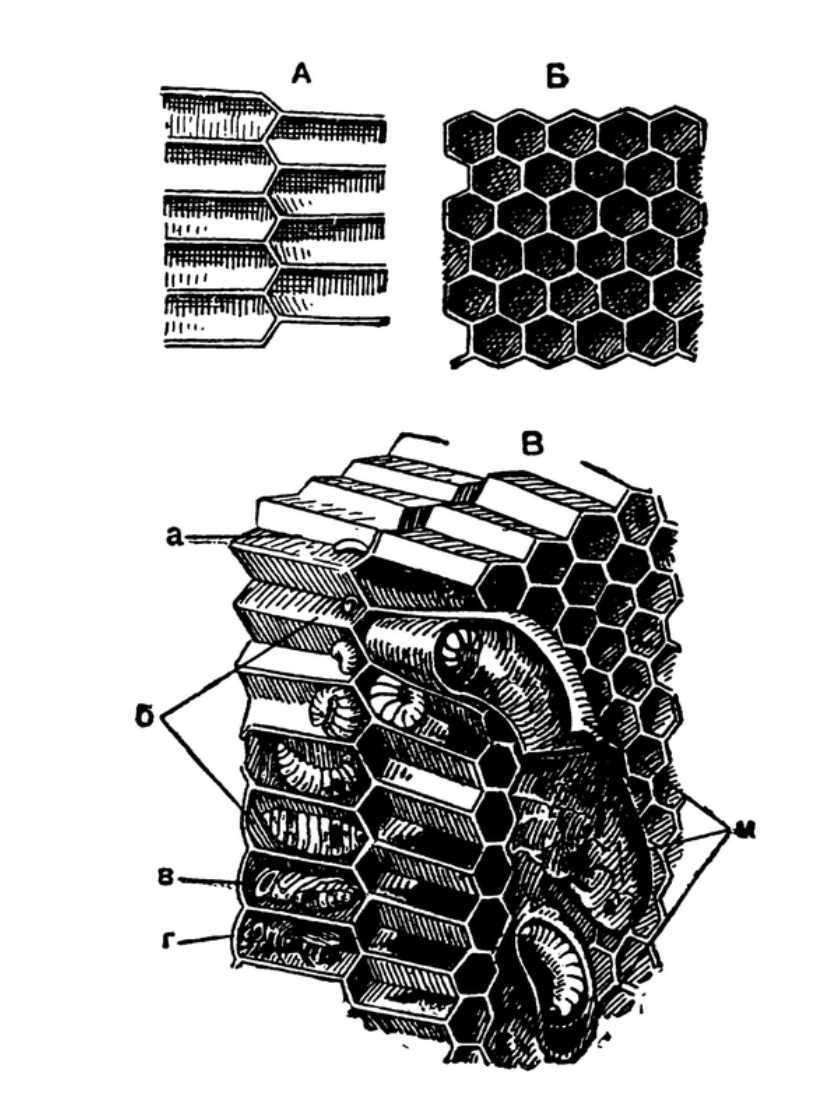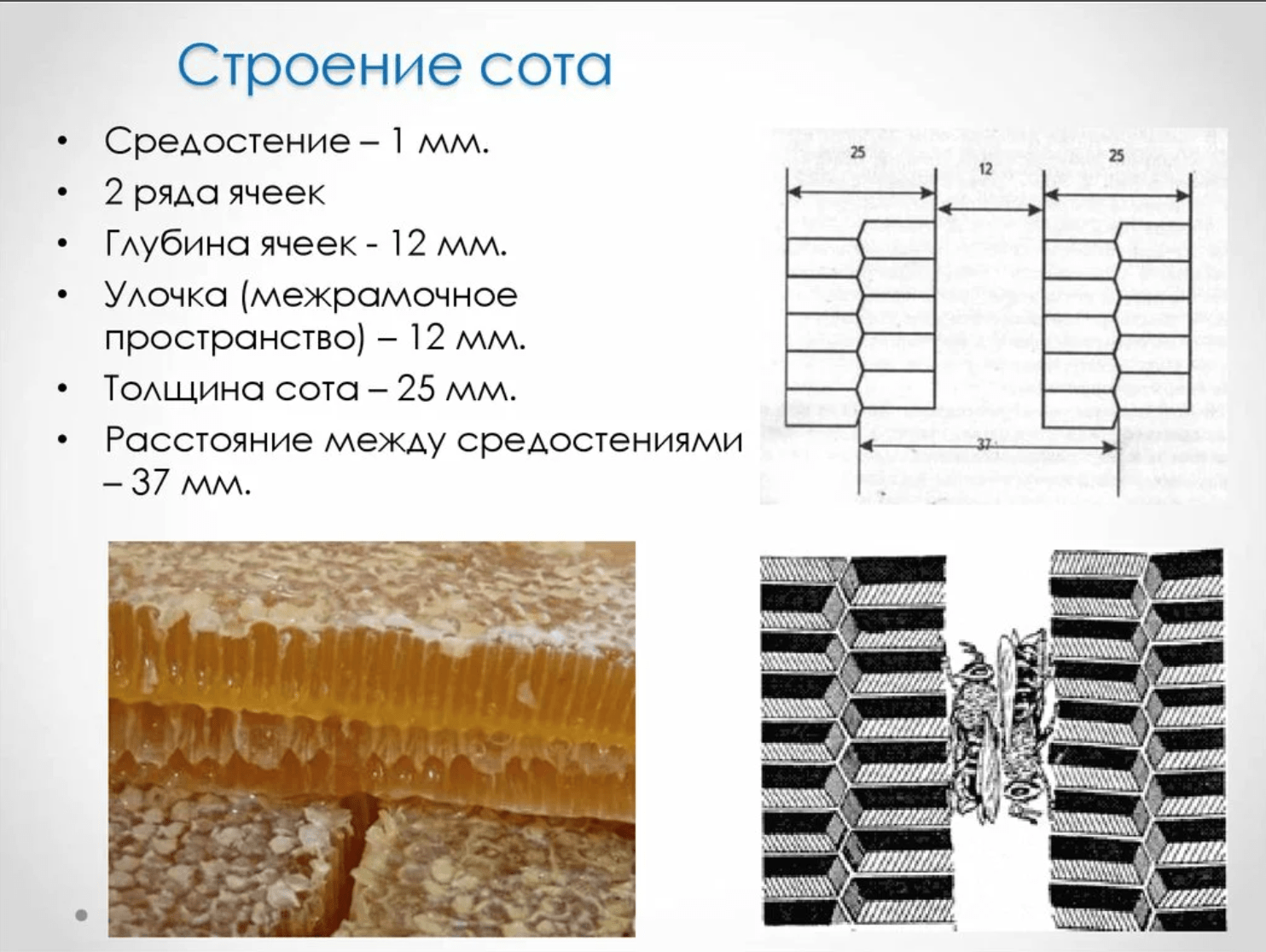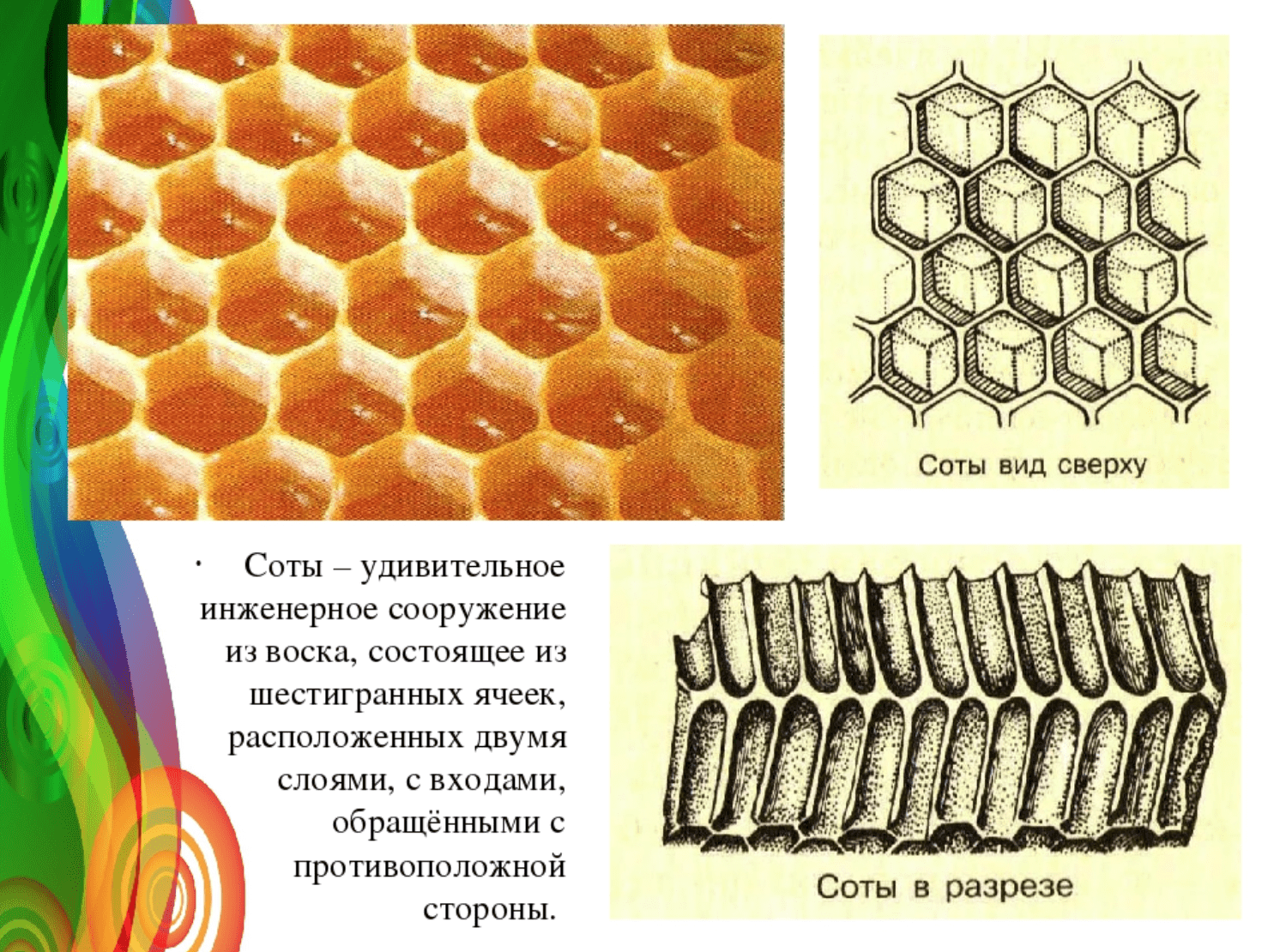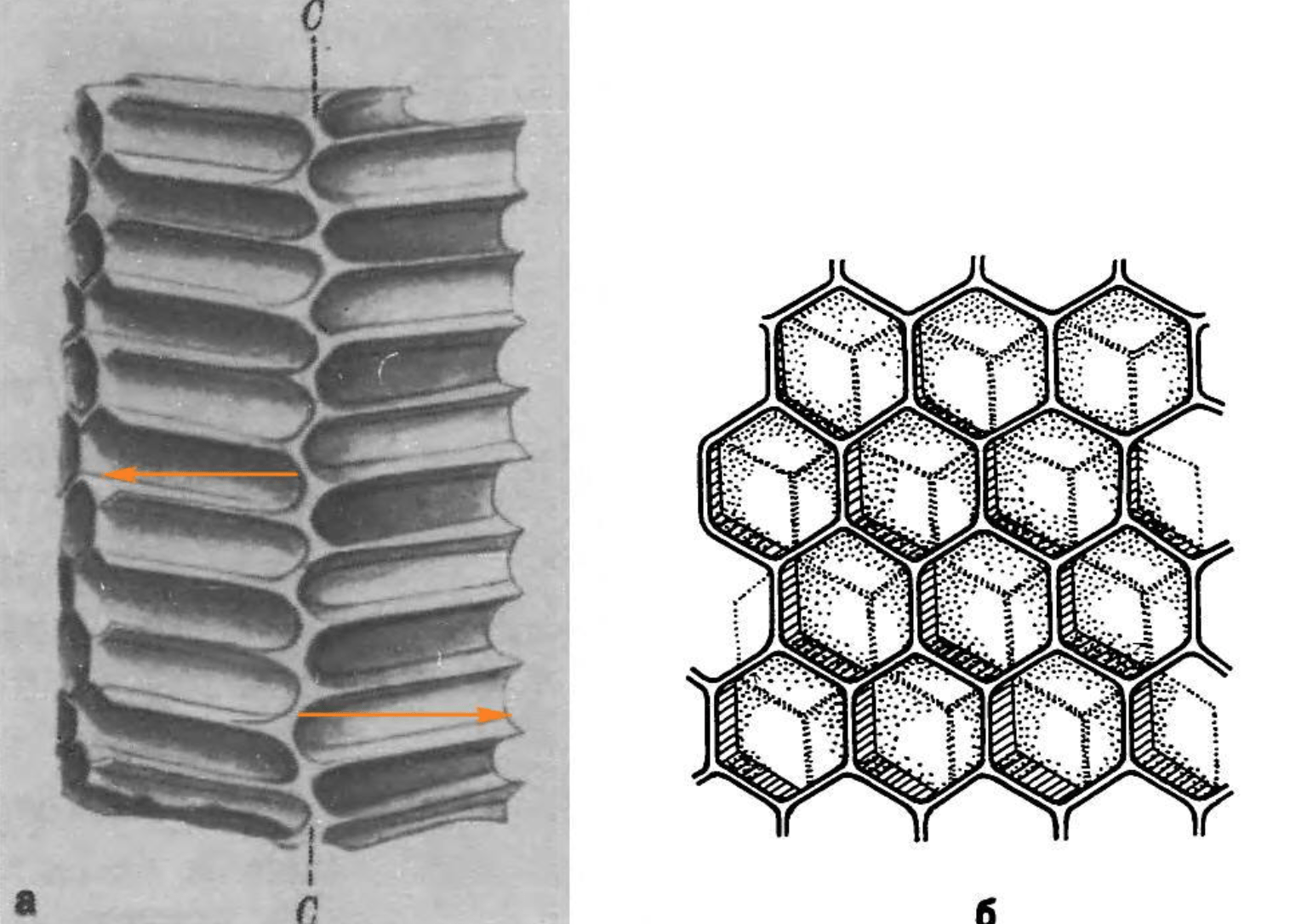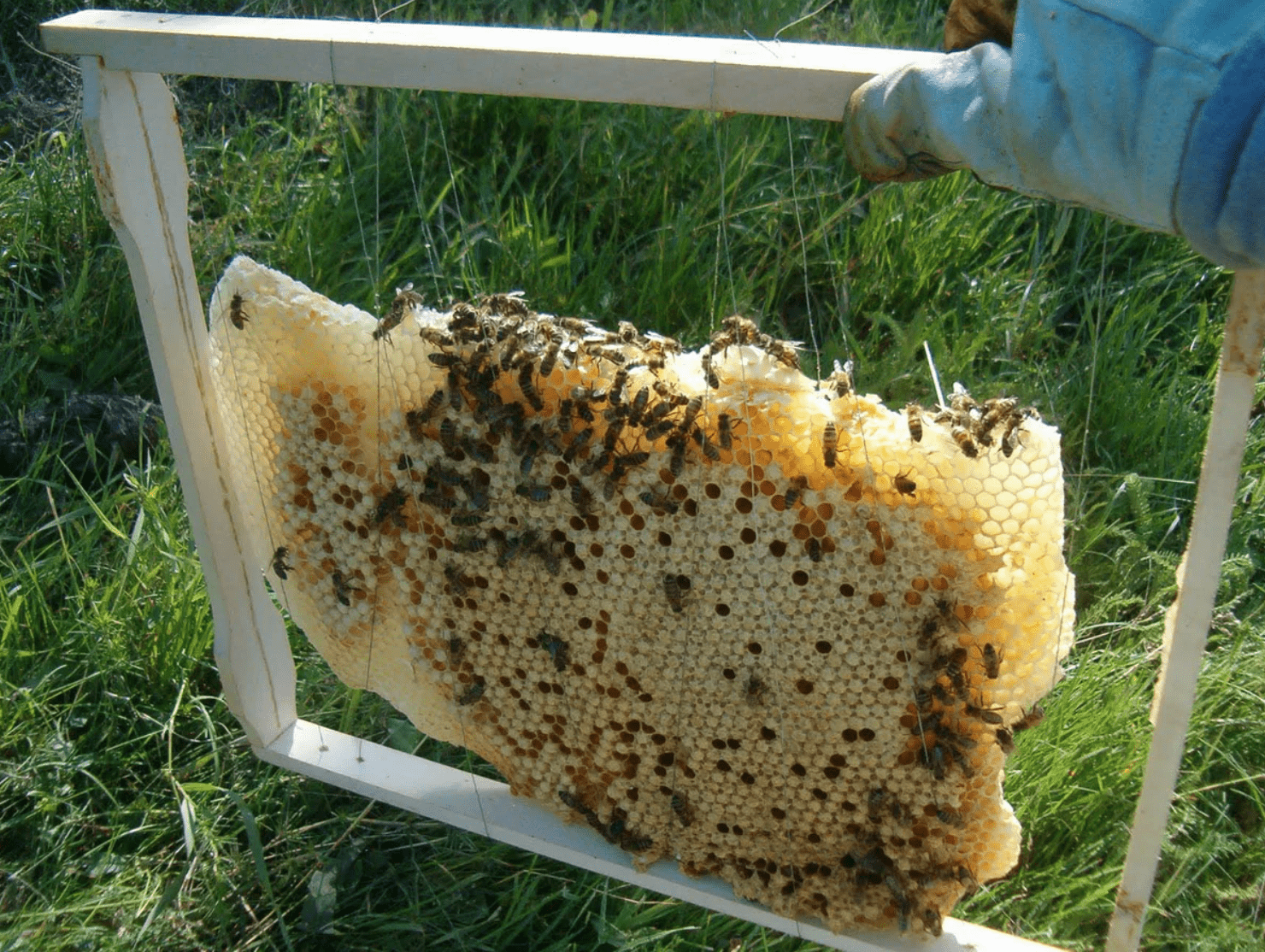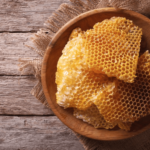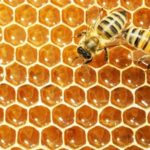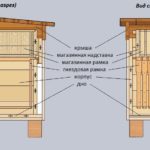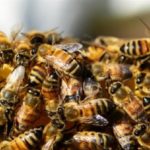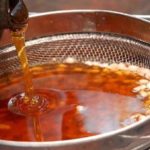Honeycombs are waxy structures of honey-bearing insects that consist of ordered cells. Such structures are used as storage facilities for eggs, larvae, and food supplies. They also contain adult insects. Honeycombs are hexagonal cells that are located on both sides of the common mediastinum. Moreover, it can be natural or artificial.
What does a honeycomb look like?
This term refers to a special layer that consists of cells.Their thickness is 25 millimeters, and the width and height are determined by the bees’ home. Layers of cells are attached to an improvised ceiling, after which they descend vertically down.
The distance that appears between adjacent structures is called a street. Most often its size is 10-12 millimeters. This interval is needed to ensure that insects in different cells do not come into contact with each other.
This design is considered unique. Each cell is a hexagon made of wax. Numerous experiments have established that this form provides a lot of space with a minimum of construction costs.
Composition of honeycombs
The honey that is inside contains a lot of useful substances. In addition, scientists have analyzed the composition of beeswax many times and found approximately 300 ingredients in it. So, honeycombs consist of the following elements:
- organic acids;
- resins;
- minerals;
- alcohol ethers;
- plant pigments;
- aroma oils;
- keto acids and hydroxy acids;
- cholesterol.
Cell types
Bee cells have different types, which differ in a number of characteristics and features.
Bees
These are standard honeycombs that have a hexagonal shape. They are used to breed worker bees. Honey and beebread are also stored in these structures. This type of cell predominates in the hive, since workers make up the majority of it.
For 1 square centimeter of the hive there are 4 such cells with a depth of approximately 11 millimeters. When raising brood, the space in the combs is reduced due to the remaining cocoons. Bees solve this problem by building up walls. An average of 13 milligrams of wax is consumed per bee cell.
Drones
If the bees have complete freedom to construct the hive, in addition to the main structures, they also make drone structures. Their distinctive feature is their large size. The depth of such cells is 15 millimeters. In this case, a maximum of 3 pieces can be placed on 1 square centimeter.
Much more wax is spent per drone cell - approximately 30 milligrams. This variety is also used for storing honey. At the same time, bees do not keep bee bread in them.
Transitional
Such cells are constructed in places where bee cells turn into drone cells. Such designs do not have standard features and no special purpose. They serve to fill the space between the mentioned cell types.
Transition cells may have irregular shapes. They are often made pentagonal. In addition, this type of honeycomb can be uneven or too elongated. In size, such structures are a cross between bee and drone structures. Brood is not raised in these structures, but they are quite often filled with honey.
Queen cells
Such cells are used for raising queens. They are considered the largest in the hive. Bees build them for two reasons - in preparation for swarming or when they lose their queen. In the first case, the queen cells are called swarming, in the second - fistulous. Swarm structures are most often made in the ribs area.
At the initial stage of construction, the queens lay eggs in them.After which the walls of the queen cells are completed as the larvae develop. As a rule, queen cells are darker in color than regular honeycombs. Such cells are not used for food storage.
Structure
Bee honeycombs have a unique structure. At the same time, in addition to them, frames are also installed in the hives.
Framework
Modern beekeepers use frames to remove honeycombs from hives. The dimensions of the cells also depend on their size. The new framed honeycombs are made from foundation. It is a thin sheet of beeswax, on each side of which there is an extruded bottom and the beginnings for the cells.
When constructing honeycombs on frames, bees first pull out the beginnings of the honeycomb, and then build them up using wax. Thus, many cells are lined up in regular rows on both sides of the frame.
There are about 4 kilograms of honey per frame. The exact amount depends on the depth of the cells. Beekeepers monitor the filling of free elements and control the quality of the wax.
Honeycomb
They are characterized by a vertical arrangement. At the same time, thicker elements are located at the top of the frame, and they become narrower at the bottom. Bees use streets for passage.
Pure wax has a white or light yellow tint. This is due to the plants that were pollinated by bees. Insects cover the walls of the honeycombs with propolis, so they become more yellow. After some time, the wax darkens. This is due to exposure to resin and insect waste. Sometimes bees are busy cleaning honeycombs.
How do bees build them?
The cells in the hive are made of wax. They are used to store honey and feed young bees. Such structures appear in a clear sequence.The ability to build honeycombs is determined at the genetic level in insects. Bees know exactly what the cells are made of and what shape they should have.
Insects begin construction around the first cell, which is called the mediastinum. Wild individuals construct this foundation on their own. When breeding domestic bees, people do this. Subsequently, construction is carried out around the mediastinum in two directions. The shape of each cell is suitable for attaching a new one.
After construction is completed, insects begin to collect nectar and put honey mass into the cells. The final and very important stage is sealing the structure.
What to do with honeycombs?
Bees always build honeycombs in the right shape. However, not everyone knows that they bring great benefits to the body. Since ancient times, honeycombs from wild bees have been used to strengthen the immune system.
Today we know that honeycomb wax is an excellent cell generator. It is often used to create various cosmetics. Due to its antibacterial properties, the substance can be used for faster healing of wounds. In addition, compresses made from this material improve blood circulation.
It is worth noting that it is quite possible to chew honeycombs without additional processing. This helps restore digestive functions, eliminate constipation and get rid of flatulence.
Honeycombs are a unique beekeeping product. They can have different types, which differ in the functions they perform. In any case, this material has a number of useful properties that are associated with its unique composition.

